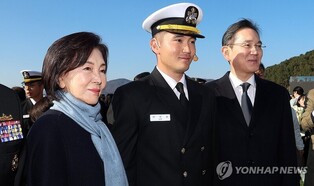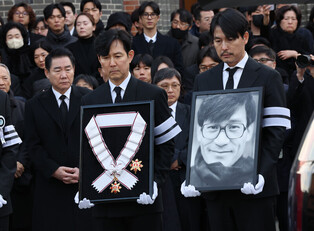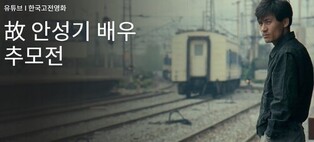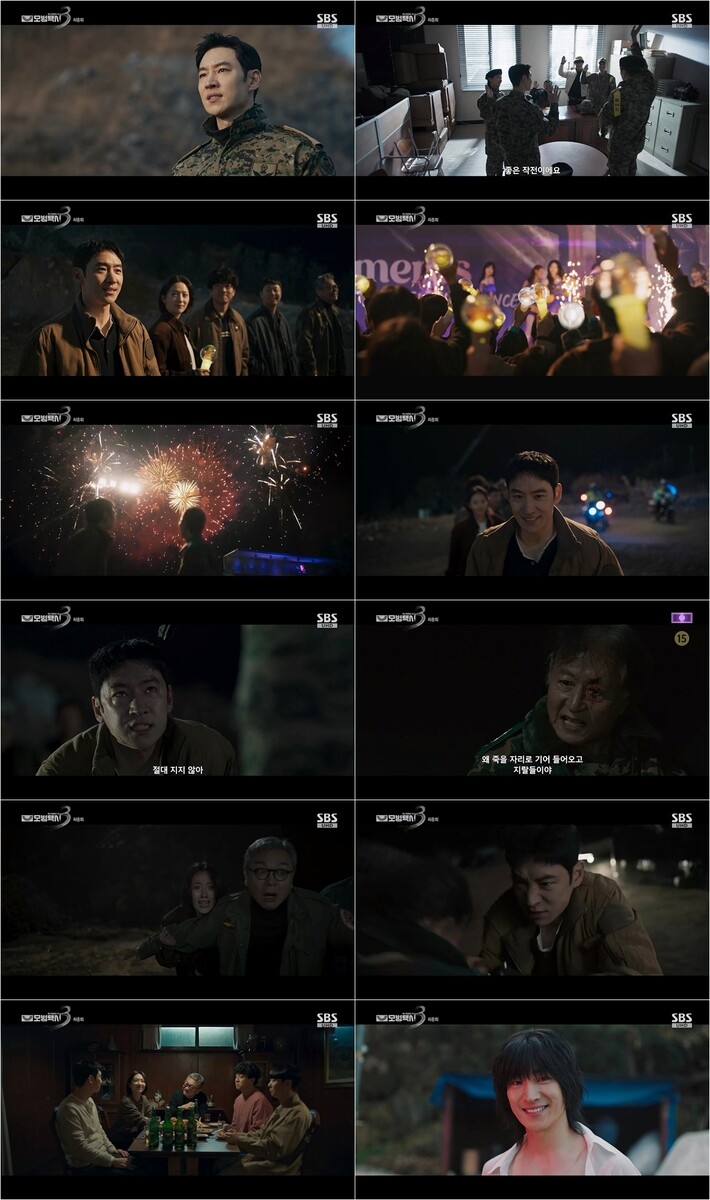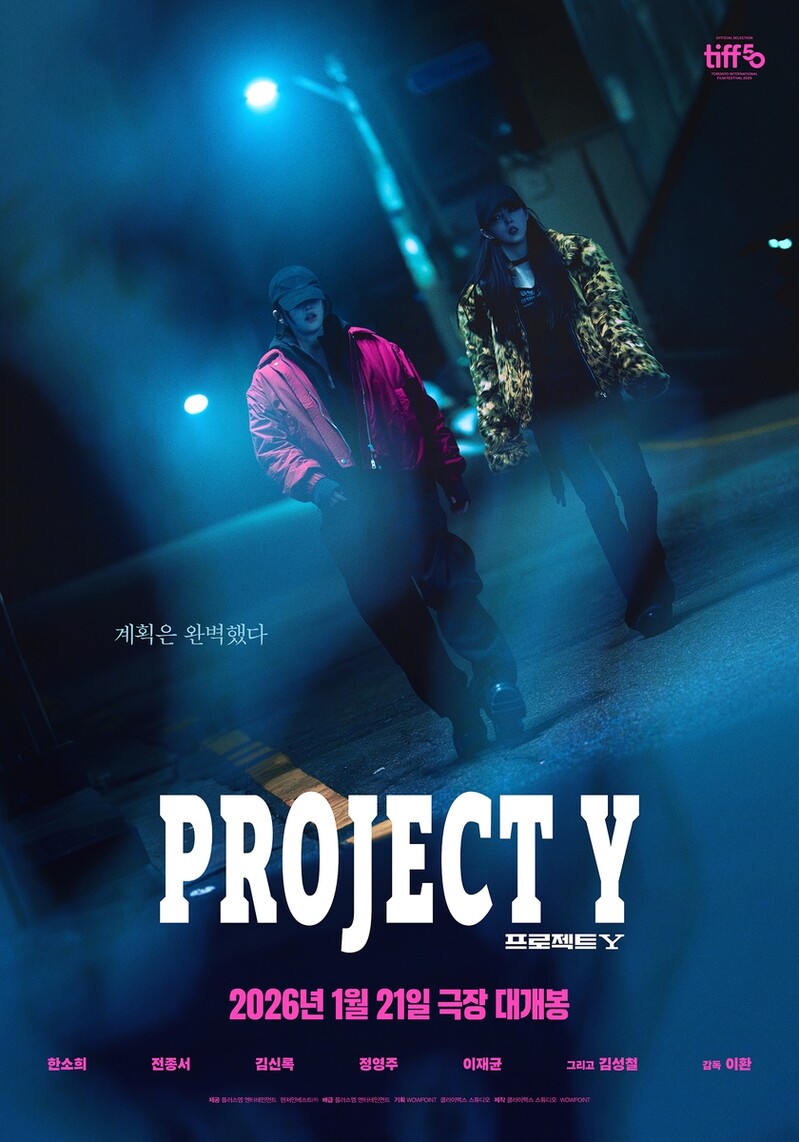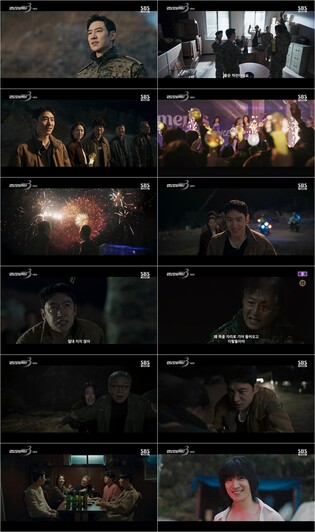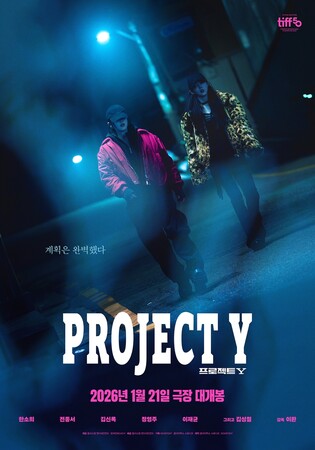*Editor’s note: K-VIBE invites experts from various K-culture sectors to share their extraordinary discovery about the Korean culture.
Larger Than Architecture: Memories of Hoenggye Village
By Kim Won (Master K-architect)
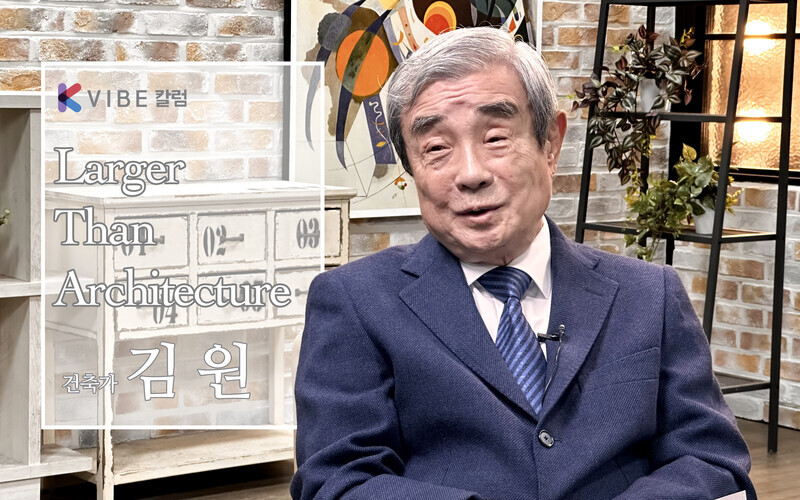
Doam-myeon, Hoenggye-ri, Pyeongchang-gun, Gangwon-do—these days, it hasn’t snowed much here for a while, so all the slopes of Yongpyong Ski Resort are covered with artificial snow, resulting in less-than-ideal snow quality. However, not too long ago, this place was known as the snowiest spot in Korea, where the snow would stay on the ground the longest without melting.
Nowadays, with the weather being so unpredictable and erratic, this winter, for instance, Gochang in North Jeolla Province saw the most snowfall and suffered significant snow damage. But under normal circumstances, Hoenggye Village in Daegwallyeong has long been famous for its heavy snowfall. My first visit here was in 1962, when I was shocked by the biting cold and the heavy snow—a relationship and memory that now spans over 40 years.
In 1961, when six or seven of us who were part of the mountaineering club at Gyeonggi High School entered Seoul National University’s College of Engineering, the senior members of the college's mountaineering club decided to welcome these formidable freshmen with an extraordinary winter program: a “Winter Polar Training Climb of Hallasan during Snowfall.” It seemed intended to challenge and discipline us. Nowadays, climbing Hallasan in high heels has become a joke due to the warmer weather, lighter snow, and improved transportation. Back then, however, we set up a base camp at Gwaneumsa Temple, which was surrounded by near-untouched forest. Above it, the trail to the Gaemimok shelter was relatively empty, even in summer, and during snowfall, it would take half a day to reach it.
The snow was so deep that if we removed our skis, our bodies would sink to a depth equal to my height. We had to cling to the skis like doing a pull-up to extricate ourselves from the snow. We established three forward camps between the base camp and the summit, using skis, and managed to “conquer” the peak in five days, completing the descent back to the base in the shortest time on skis. However, this record was not without its close calls, as some team members nearly faced dire situations.
One memory that remains a lingering source of shame for me occurred on the descent. As we trudged through thick fog, following the ski tracks of those ahead, we lost our way. Exhausted, I supported a fellow climber who was on the verge of collapse. Eventually, I too became so fatigued that I left him near the memorial stone of his mentor and made my way down alone. Late at night, I reached Gwaneumsa and implored the monks for help. I only remember the sight of the monks rushing out with torches before I collapsed from exhaustion. This incident has stayed with me as an indelible mark of my own shortcomings.
The next day, we traveled back to Busan on a night voyage aboard a steel vessel called "Pyeongtaekho," taking 20 hours. Upon arrival, we met up with friends heading to Seoul at Busan Station, then returned to my family home in Daesin-dong. I collapsed as soon as I got there and endured a severe illness, sleeping continuously for three days and nights.
During those three days, I vividly remember my younger sister, who watched over me with great concern. She was a high school senior at the time and sat by my side, studying quietly. Whenever I woke up, hungry or needing to use the bathroom, her presence felt reassuring, warm, and kind. Although my Hallasan story has become long, I'll save the rest for another time and return to the topic of skiing and Yongpyong. It was during our Hallasan expedition that we first became captivated by the power and allure of skiing. Particularly memorable was our leader, Jo Jang-hee, whose graceful execution of the Christiania turn (what we called a diagonal descent back then) was as smooth as it was impressive.
From the following winter onward, we set up a long-term camp in Daegwallyeong. Snow or no snow, we’d head there, often spending our time simply waiting for the snowfall. It became almost a tradition—“winter means Daegwallyeong.” At that time, lodging with locals wasn’t a common practice, so we would choose a house, make arrangements to stay through the winter, and let the hosts handle the firewood and meals. Among the homes we frequented, the “Company Commander’s House” and “Misook’s House” were some of the better options. The former, where the head of the household was a reserve army company commander, was good because he always stocked plenty of firewood, keeping the floor warm all winter. Misook’s mother, on the other hand, was an excellent cook.
These houses weren’t designed for lodging guests, so accommodating large groups of burly students meant space was always tight. While the leader might get a private room, it wasn’t uncommon for eight freshmen to cram into one room. Usually, five or six of us would sleep in a small room. The seniors and juniors weren’t separated by room, and each room had its own hierarchy, with the upper side reserved for seniors and the lower side for juniors. Sleeping in the lower part of the room was practically impossible. For the warmth to reach the seniors' side of the room by dawn, the floor of the lower side had to become unbearably hot, almost scorching the floorboards. This heat made it only natural that the juniors had to sleep there.
But it wasn’t just sleep that the juniors had to sacrifice. After dinner, no matter how much their backs, legs, or calves ached, they couldn’t rest. They had to carefully wipe the moisture off the seniors' wet military boots (U.S.-made leather boots) and line them up neatly by the warm spot, ensuring that they’d be dry and warm by morning. This way, the seniors wouldn’t have cold feet throughout the day. If they forgot and left the boots outside, the leather would turn into solid ice, requiring a fire to thaw them out. On top of the boots—typically six pairs, a total of twelve shoes—they also had to dry out the wet plywood skis, laying them out on the warm floor and polishing them with wax or candle wax. Without this, the skis wouldn’t slide smoothly the next day, and the juniors would face endless nagging. As for socks and long underwear, there was neither time nor hot water for washing, so we wore them for a week or even ten days at a stretch, resulting in a strong odor when we slept. The socks we tried to dry by spreading them under our blankets reeked like grilled squid throughout the night.
Yet, despite the discomfort, we slept deeply, snoring soundly. After spending the entire day traversing snowfields with heavy skis on our shoulders, climbing up hills for 30 minutes to enjoy a mere 3-minute descent, we had no time for drinking or other entertainments like today’s youth. Resting our backs on the unbearably hot floor of the ondol-heated rooms from early evening until morning was essential for our sore muscles to recover and be ready for another day of exertion.
But each morning brought a new challenge. With only one outdoor toilet in that rural home, a battle for turns among 20 young men unfolded in the yard every morning—nothing short of a real war. When my turn finally came, I’d enter the small outhouse, lower my pants, and kneel on the wooden planks. The bitterly cold Daegwallyeong wind, at -10°C, feeling more like -20°C, would sting my exposed skin. Looking down, I’d see the daunting sight of a towering, frozen pyramid beneath, as if ready to pierce the sky. Reflecting on it now, completing such a task in those harsh conditions seems like nothing short of a miracle.
We didn’t have designated slopes. There were no well-maintained ski resorts with groomed runs and lifts. Instead, we trudged up the hills as far as our legs could carry us, then skied down from that point. It was a short and not particularly high descent, and today’s skiers might wonder what fun there could be in such a monotonous routine. But for us, those repetitive efforts—like the vigorous breath steaming from our mouths in the cold—felt like an energetic expression of life’s essence and the value of youth.
We sought out areas with deep snow for skiing, but our numbers quickly trampled down the powder, and we’d need to find new spots the next day. If fresh snow didn’t fall, we often had to venture far afield, searching for unspoiled slopes. During years with less snowfall, we sometimes traveled from nearby Jinbu or Hajinbu to the more remote areas like Chahang-ri or deeper into Nae Chahang to find patches of snow that still lingered on the hillsides.
After graduating from university and working at Kim Swoo Geun's architecture studio, my situation improved significantly, thanks to a senior colleague from school. His father managed a hops farm for OB Beer in Soksari, which allowed us to enjoy skiing in a much more comfortable setting. We could stay in the clean and cozy accommodations of the farm, where meals and lodging were taken care of. Each morning, we’d ride a farm truck to Hoenggye-ri and continue our usual routine of hiking up and skiing down, a simple yet satisfying pastime. During those years, the mental strain of finding excuses to leave the busy office for a few days of skiing often outweighed the physical demands of our time on the slopes.
Fortunately, Kim Swoo Geun, my mentor, was understanding of my passion. It seemed that he recognized my restlessness when the ski season arrived. I would complete a week’s worth of work in just three days, present it for his approval, and then ask for permission to use the remaining days for skiing. He usually gave his consent without hesitation. The only downside was that our unspoken agreement would become evident when I returned, my face tanned from the days outdoors.
By this time, the harsh discipline of the university’s mountaineering club was behind me, so I had the freedom to choose when, where, and with whom to ski. It was a time when I could genuinely enjoy the sport. During this period, a former high school junior, Myung Il-bu, became my ski instructor. He was not only well-versed in various sports but also had access to Japanese books on mountains and skiing, which broadened his knowledge. He was also generous with his time and respectful toward me, making it easy to plan outings together.
We frequently visited the newly developed ski slopes and lodge at Jinburyeong, which the military had constructed. Soldiers had cleared trees and bulldozed roots, creating a nearly 1-kilometer-long slope, though without any lifts. This opened up a new realm of downhill skiing for us. Around that time, a severe avalanche on the frontline claimed many soldiers' lives, with rescue operations delayed due to heavy snowfall. This tragedy led to the establishment of a ski unit within the military, and the newly appointed company commander, Lieutenant Yang, a former ski athlete, played a key role in this development. While I now only vaguely recall his face and name, I remember that he was kind-hearted and treated us well.
One memory of Lieutenant Yang that stands out is when, after the “Usugeongchip” (the time when water starts to thaw in late winter), he would overturn rocks in the stream to find groggy frogs still emerging from hibernation. He would roast their legs over a campfire and offer them to us, a vivid memory that lingers even now. Later, he participated in the cross-country skiing event at the Winter Olympics in Innsbruck, making headlines as he finished in last place, with the international press covering his story under titles like "The Korean Spirit of Perseverance to the Finish Line." He became a notable figure in the early days of Korean skiing.
After I became independent and opened my own office, my situation improved further. This was largely thanks to my high school seniors, Professor Lee Chang-hwan from Ewha Womans University’s Physical Education Department and Professor Go Seong-hwan from the Department of History. Every winter break, they took Ewha’s mountaineering club members to Hoenggye for ski training, and due to the large number of students, I was invited to join as an assistant instructor.
As an assistant, my job was to teach the beginners the basics of skiing—things like how to wear ski boots, attaching and detaching skis, standing upright, walking on flat terrain, kick turns, side steps, the herringbone technique, and how to fall safely. By that time, imported plastic skis had started to become available, and while they were more expensive, they featured German or Austrian-made safety bindings. Although this meant skiing had moved beyond the primitive methods of the past, we still had to hike up natural slopes, relying on our own effort just as before.
The introduction of safety bindings marked a significant leap forward. In contrast to the days when we would strap plywood skis to our feet with leather cords tied around U.S. Army boots, these new bindings automatically released the skis during a fall, reducing the risk of leg injuries. Plastic skis themselves were far superior to plywood—they were lightweight, sleek, and provided a smooth glide.
At that time, skiing manuals recommended skis that were about 30 centimeters longer than the skier’s height. This made even turning around while wearing skis a technical challenge that had to be mastered first, a maneuver known as the kick turn. Performing a kick turn without losing balance on a slope was a particularly tricky technique, but it became my specialty when teaching the female students.
Yet, as the saying goes, "good fortune is often accompanied by misfortune." One day, I got too carried away while demonstrating a move to the 20 or 30 students I was instructing, and in my enthusiasm, I pushed myself too hard. I fell, and the sharp edge of my brand-new right ski cut deeply into my left knee. My skis at that time were a new model from the well-known Nishizawa brand. I might have been skiing without safety bindings, as the skis didn’t detach even after I fell, causing my legs to become entangled. The sharp edge of the right ski, which had an aluminum blade for better grip, acted like a knife and slashed into the bone of my left leg.
I tried to play it cool, pretending that it wasn’t too painful, but it soon became clear that the injury was serious. When I finally took a closer look at my left leg, I noticed that the waterproof rubberized fabric of my ski pants had been sliced open about 5 centimeters, as if cut by a razor. Blood was seeping through the cut, and when I pulled the fabric apart a bit, I could see the white of my bone through the torn flesh. Only then did the pain intensify, and when I removed my ski boots, I found my long underwear and socks soaked in blood, with a pool of it collected inside the ski boot.
Later, I heard that during that incident, my face was so pale that the students immediately sensed I was seriously injured and worried about me, even though I pretended to be fine. Fortunately, a nursing student stepped forward to perform basic first aid to stop the bleeding, and she called for Professor Lee Chang-hwan from another slope. As a physician, Professor Lee examined my wound and immediately decided that I needed to go to a hospital. I was carried down the mountain by a few of the students and taken into Hoenggye town, but, as expected, there wasn’t a hospital in such a rural area.
We managed to find a pharmacy, where Professor Lee had me lie down on a long wooden bench. He asked the pharmacist for a sewing needle and thread, then disinfected them before stitching up my wound without any local anesthesia. The students, trembling with nerves as they held me down, made it impossible for me to cry out in pain. I gritted my teeth and endured that “surgery” in silence. Afterward, I was immediately sent back to our lodging with strict orders to stop skiing, spending the remaining ten days of the trip confined indoors, surviving on aspirin and antibiotics.
Thankfully, Professor Lee arranged for an older assistant instructor and a student who had lost interest in skiing to stay behind and take care of me. The three of us—myself, the assistant, and a rotating student assigned daily—spent those ten days together, which, in retrospect, turned into a fond memory. Among them was a history major, a student of Professor Go Seong-hwan. During one of our conversations about my work, she shared a story about Cambodia's Angkor Wat, even discreetly showing me a faded, ink-blurred photo she had hidden away. At that time, possessing or sharing photos from a communist country could be extremely risky.
That moment sparked my fascination with Angkor Wat, a place I dreamed of visiting even in my sleep. It wasn't until thirty years later, in 2000, that I finally got the chance to travel there. As I explored the ruins, I couldn’t help but remember that beautiful student who first introduced me to its mystique.
In some years, heavy snowfall in Gangwon Province would block the roads over Daegwallyeong Pass, cutting off transportation entirely. Snow-induced road closures were a common occurrence in the region, but there were two or three times when we were stranded in Hoenggye village for a week or even ten days, waiting for the roads to clear while we were there. People back then seemed more patient or perhaps more accustomed to Korea's underdeveloped conditions. Road closures were simply seen as natural disasters, and it wasn't unusual for people to accept it calmly, even if it took ten days for the roads to be reopened.
The bigger issue for us was running out of essential supplies—cigarettes, toothpaste, soap, canned food, and snacks—as well as needing to re-wear undergarments that had been set aside for washing. But the most pressing problem was running out of money. When that happened, those of us with families in Seoul would make a call asking for a bit of cash. Then we’d spend several days visiting the Hoenggye post office, checking each day to see if the money had arrived. Once the money order came through, we’d retrieve it, have a few drinks together that night, and share the funds among us.
Speaking of transportation, it’s safe to say that back then, transportation issues were far from resolved. Buses from the Gangwon Passenger Terminal in Dongdaemun’s Majang-dong would travel on winding, unpaved mountain roads, passing through Wonju before eventually reaching Daegwallyeong. This journey typically took eight hours, but that was under ideal conditions. In the middle of winter, however, smooth travel was the exception rather than the rule. Snow frequently blocked the roads, and even when there wasn't a blockage, buses would crawl along, turning the trip into a ten-hour ordeal. Sometimes, the 200-kilometer stretch would take up to twelve hours, effectively averaging a speed of 20 kilometers per hour—hardly what you’d call a reliable transport option.
The vehicles themselves were another issue. It seemed that old military trucks had been repurposed into passenger buses, and they frequently broke down mid-journey, leaving passengers stranded for hours. Worse yet, incidents like steering malfunctions or brake failures, leading to accidents or even plunges down cliffs, were not uncommon. It was the kind of situation where, even if there had been insurance companies at the time, they would have refused coverage given such perilous conditions.
Even when the weather was clear, the roads passable, and the buses in good condition, completing the eight-hour journey was still a test of endurance. The rough, gravelly roads meant that the hard wooden seats effectively turned the bus into a vibrating machine, shaking passengers’ tailbones relentlessly. When the bus would stop every couple of hours for restroom breaks, passengers would stagger off, backs aching, legs wobbling, and heads spinning. And to make matters worse, the constant vibrations would loosen every screw and bolt in those old vehicles, and ropes tying things down would come undone, leaving the bus’s contents jumbled and scattered.
One way to minimize the jostling was to strap skis to the bus's overhead handrails, letting them sway with the vehicle’s movements. This technique somewhat lessened the impact of the vibrations. But if you let your guard down even a little—like dozing off for a moment—you might find that the straps had come loose, and the skis would tumble down, hitting a passenger on the head or scattering nuts, bolts, and other parts all over the bus floor. Truly, those were tales from a different era.
Then, in 1975, with the construction of the Yongpyong Ski Resort, which began at the summit of Balwangsan and stretched down its northern slopes, the memories of trudging up hills in Hoenggye village without a lift became just that—memories. Roads improved, cars got better, and while it became easier and more convenient to make the trip and spend more time skiing, our youthful days gradually faded into the past.
Even now, I still visit every year without fail. But I recall how in 1980, I collided with someone near the summit of the Red slope, tearing the ligament in my right knee. I spent two months in the hospital undergoing surgery to repair it, immobilized with a cast, and another two months relying on crutches. It took six months of physical therapy to recover, and a full year of hardship overall. Even now, 25 years later, my leg isn’t fully healed. These days, I spend most of my time on the gentle Green slopes, taking things slowly and savoring the snow, remembering how I once threw myself wholeheartedly into this passion so long ago.
January 2006
(C) Yonhap News Agency. All Rights Reserved

















